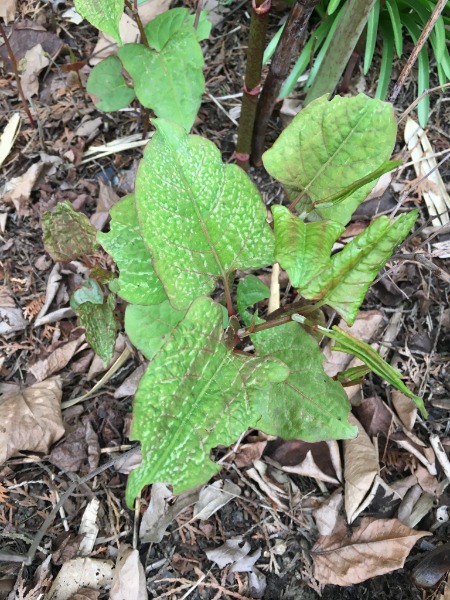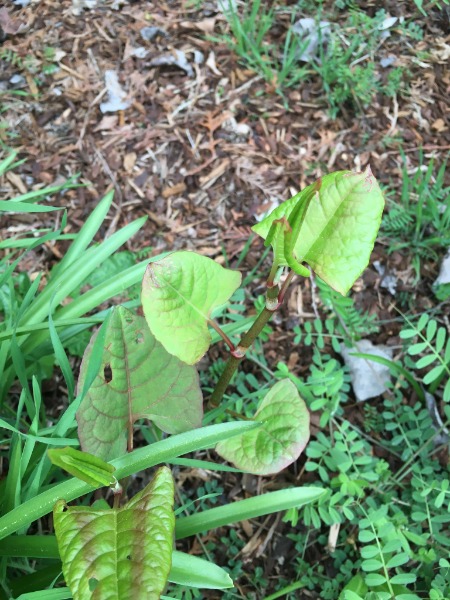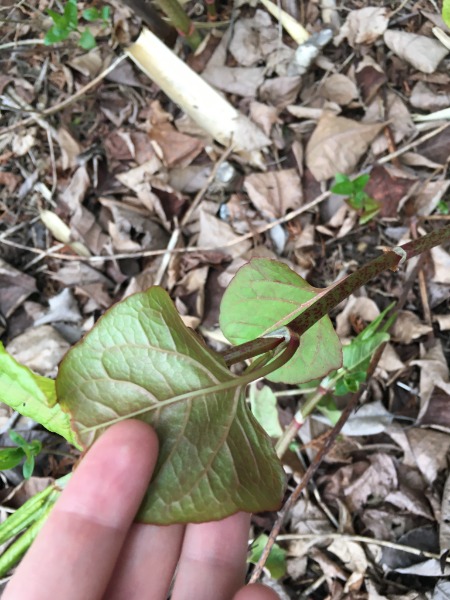Japanese Knotweed (Fallopia japonica) on Mar 28, 2022
Submitter has sample
EDRR Status: Local expert notified
Description of specimen
The knotweed occurs in an approximately 5 x 15 ft area in the northwest corner of our front yard, in a partially shaded area with other woody plants.





All that said, it's common on residential properties to try a manual control. Feel free to pull and dig the plants and place them in a bag and then into the garbage rather than a yard debris bag or bin. Keep out of compost piles onsite. With manual work, keep an eye on the perimeter of the treatment area for about 20 feet to see if any new shoots pop up (sprout from lateral, underground roots). We don't have a program for treatment of knotweed locally unless you're right along a creek. Landscapers might be of help if you're not able to take care of this. Sincere thanks for taking care of this population before it spreads...knotweed is a very troublesome invasive weed. Michael Ahr, Benton SWCD
Michael Ahr
March 28, 2022, 10:23 p.m.